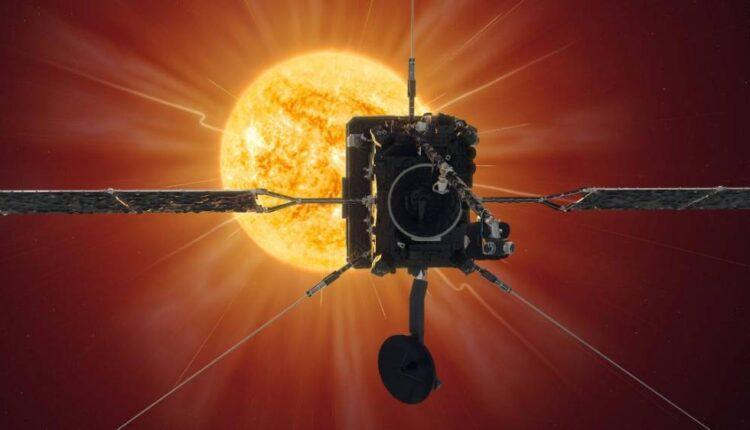London (CNN Business)When the European Space Agency (ESA) designed a spacecraft to fly closer to the sun than any other probe in history, it faced a major problem: how to shield the probe from extreme heat and radiation.
A joint mission with NASA, the Solar Orbiter launched in February 2020 and recently emerged from its first pass behind the sun. It has to be able to withstand temperatures hot enough to melt lead, as well as 13 times the radiation that reaches the Earth’s surface. At first, the agency looked for conventional solutions, based on metals and carbon fiber, but they were not good enough, Cesar Garcia Marirrodriga, ESA’s project manager for Solar Orbiter, told CNN Business. Instead, the agency found the answer in a material that dates back to the Stone Age.
An ancient pigment
After ESA put out an invitation for solutions, it was approached by Irish biotechnology company ENBIO. It had developed a technique to apply synthetic bone coatings to orthopedic and dental implants, to make them more easily accepted by a patient’s body. Because the technique reduced weight and prevented issues like flaking, ENBIO thought it could be useful for the titanium surfaces of Solar Orbiter. Read MoreBut the synthetic bone was light-colored and testing showed that it would darken after prolonged exposure to sunlight, changing the amount of heat it absorbed and reflected. A black coating meant its properties would be stable for the whole mission, absorbing the sun’s energy as heat and then dumping that into space.

Photos: Solar Orbiter is a collaboration between NASA and ESA, designed and built by a team led by Airbus. Launched in February 2020, it will observe the sun in unprecedented detail, as shown in this artist’s impression.Hide Caption 1 of 10
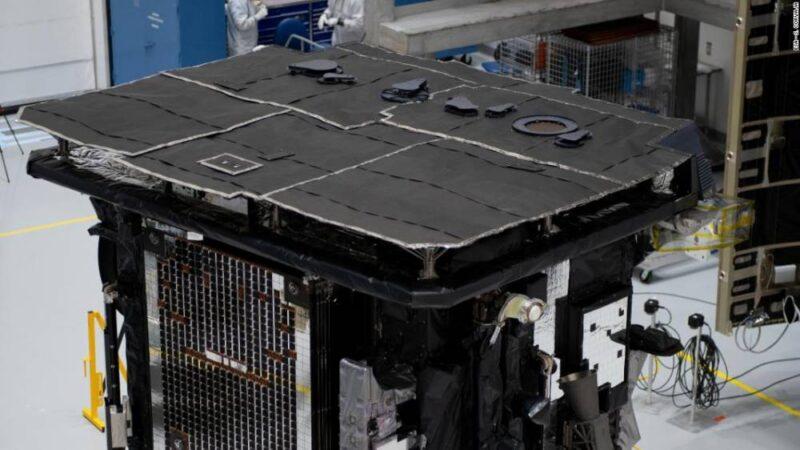
Photos: To protect it against the sun’s heat, Solar Orbiter is coated with SolarBlack, made of charred bone. The coating was developed by Irish company ENBIO.Hide Caption 2 of 10
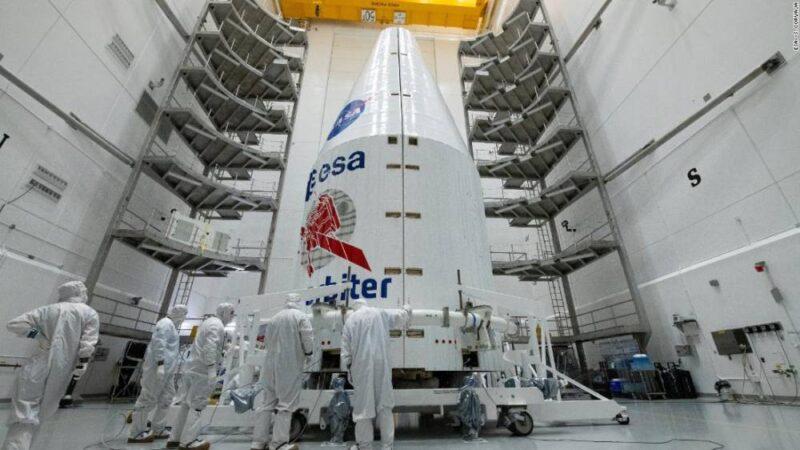
Photos: Solar Orbiter was launched inside the US Atlas V 411 rocket, pictured at the Astrotech payload processing facility in Florida, during launch preparations on 21 January 2020.Hide Caption 3 of 10
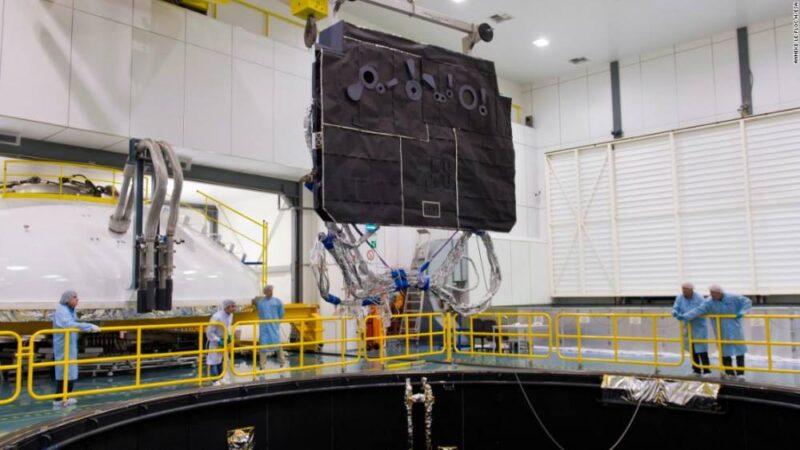
Photos: During testing, the engineering model of Solar Orbiter’s sun shield was lowered into a vacuum chamber at ESA’s Technical Centre, in Noordwijk, the Netherlands. The test creates a vacuum, while the chamber walls are pumped with -190°C liquid nitrogen to mimic the extreme cold of deep space. Mirrors focus the light from 19 lamps into a concentrated beam of artificial sunlight on the sun shield for several days.Hide Caption 4 of 10
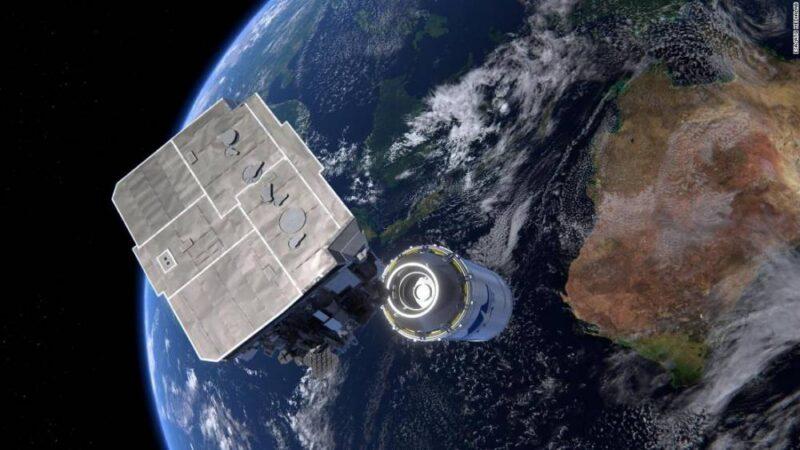
Photos: An artist’s impression of Solar Orbiter after it separated from the upper stage of the rocket that launched it into space.Hide Caption 5 of 10
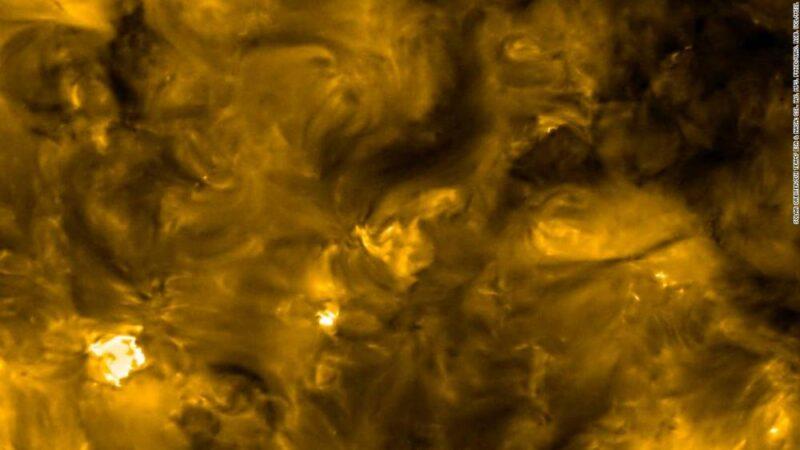
Photos: In the first year of its mission, Solar Orbiter has collected valuable data. This image was taken on 30 May 2020 and shows the sun’s appearance at the extreme ultraviolet region of the electromagnetic spectrum. Images at this wavelength reveal the upper atmosphere of the sun, the corona, with a temperature of around 1 million degrees Celsius.Hide Caption 6 of 10

Photos: This image shows a map of the magnetic properties of the sun. Taken on 18 June 2020, there is a large magnetically active region in the lower right-hand area of the sun.Hide Caption 7 of 10
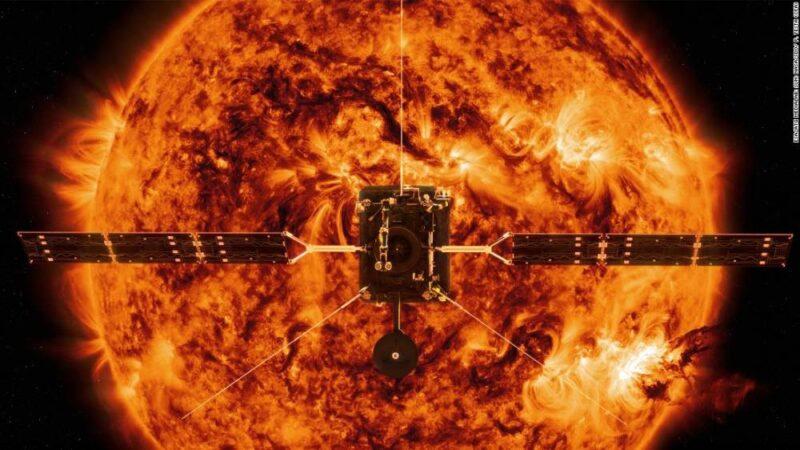
Photos: Solar Orbiter reached its first perihelion, the point in its orbit closest to the sun, on 15 June 2020 — 77 million kilometers from its surface.Hide Caption 8 of 10
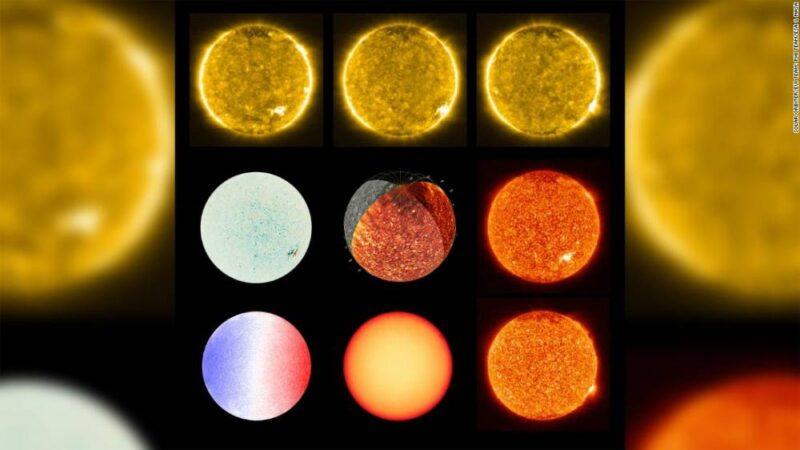
Photos: Solar Orbiter captured the many faces of the sun in different wavelengths of light during its first close pass.Hide Caption 9 of 10
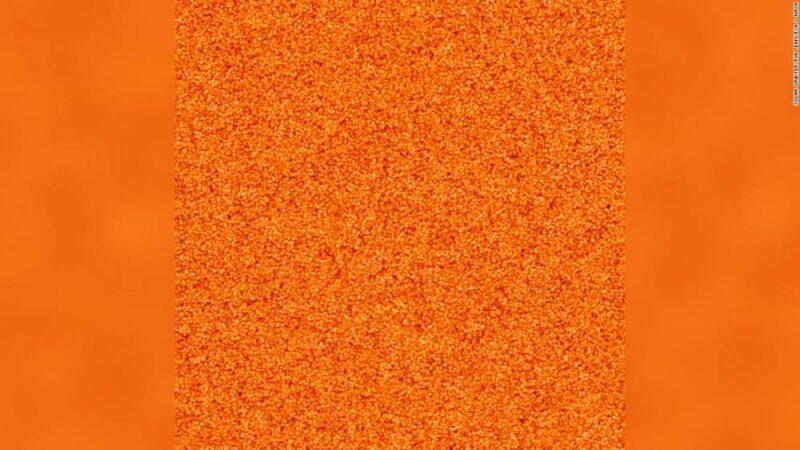
Photos: This image shows the sun’s granulation pattern that results from the movement of hot plasma under the sun’s visible surface.Hide Caption 10 of 10
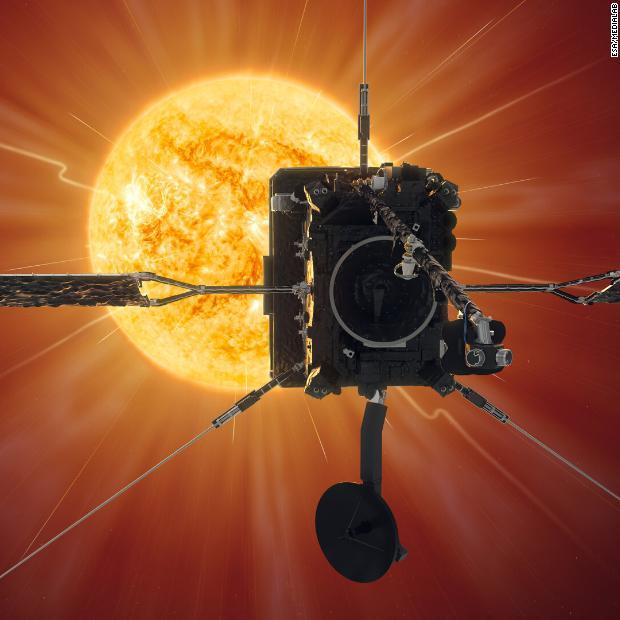
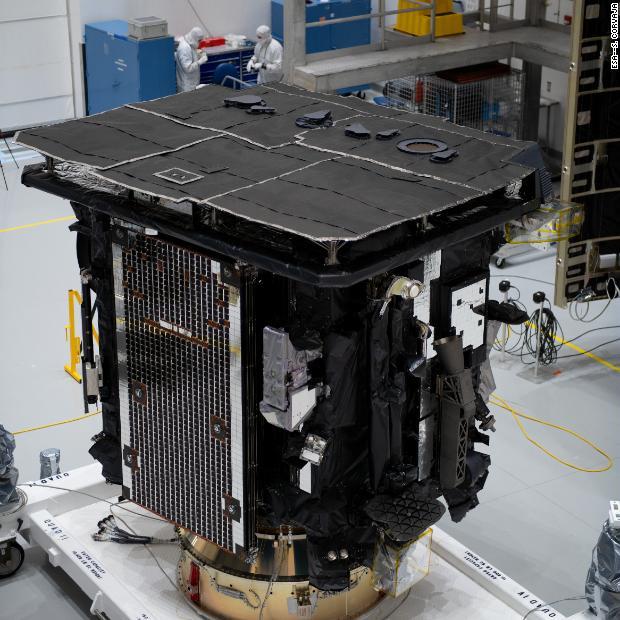
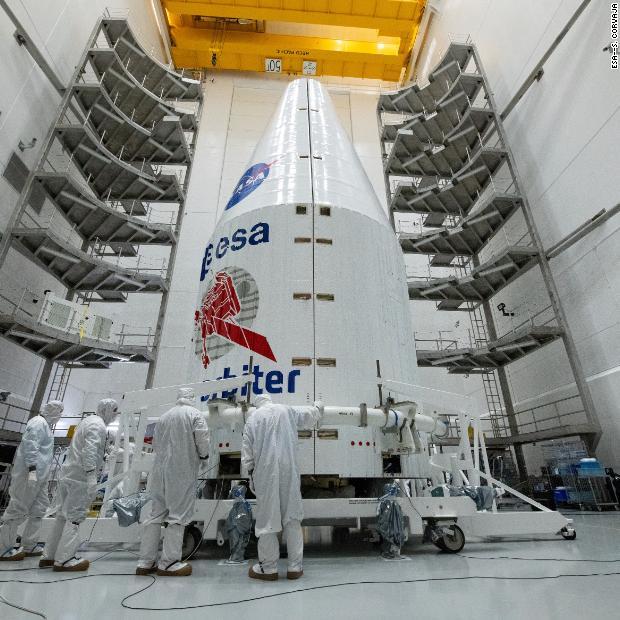
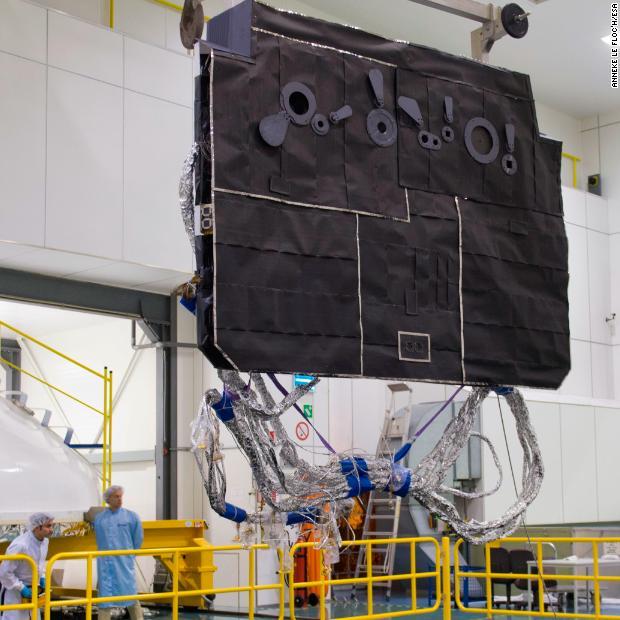
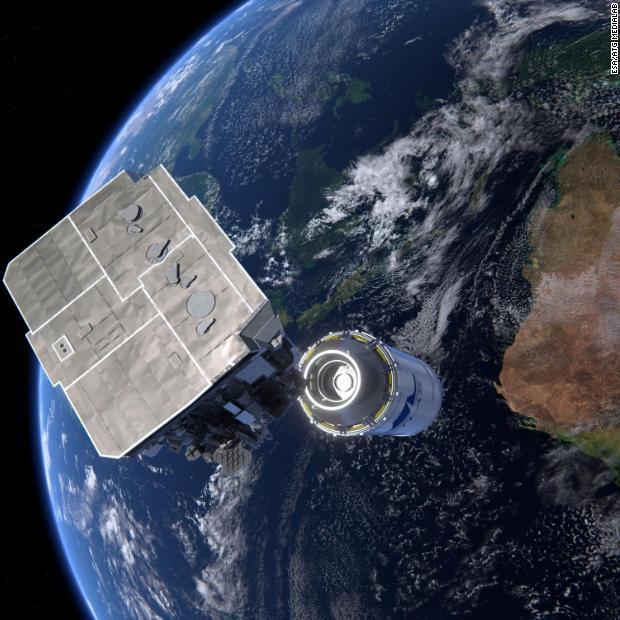
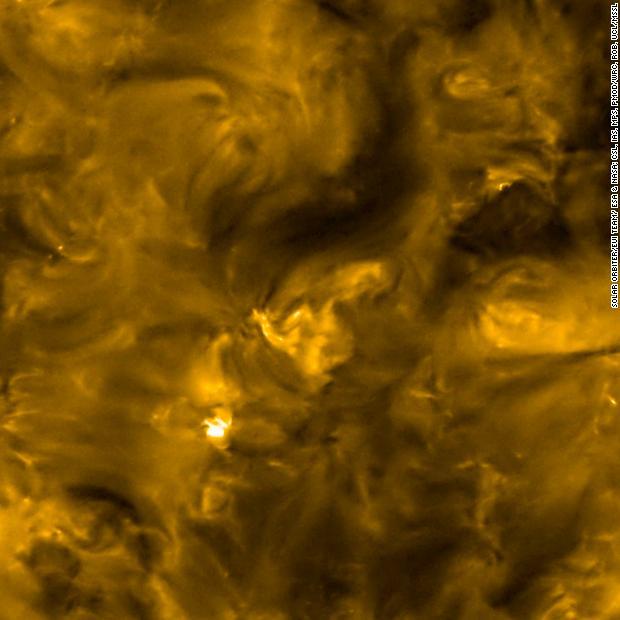
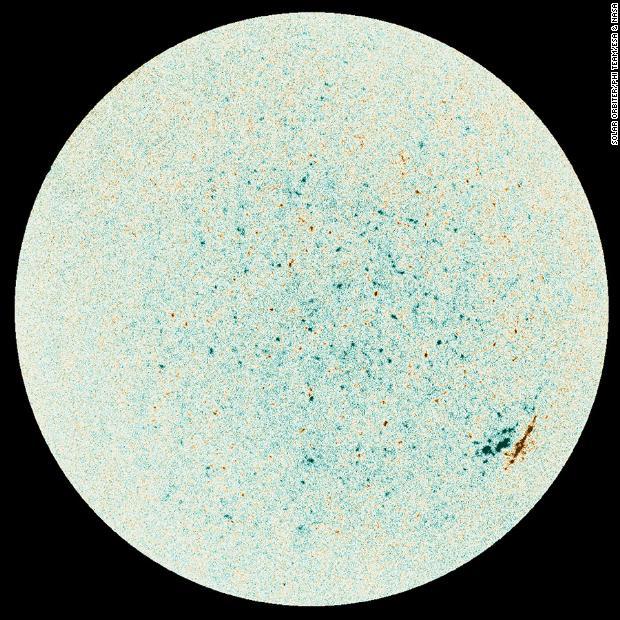
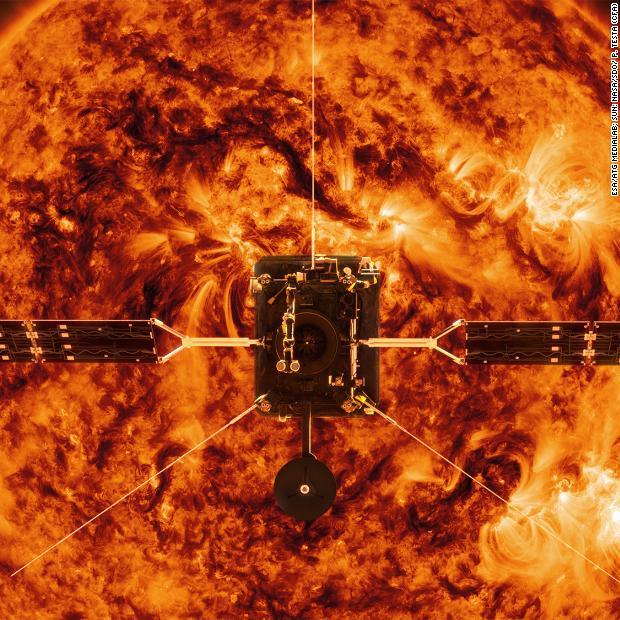
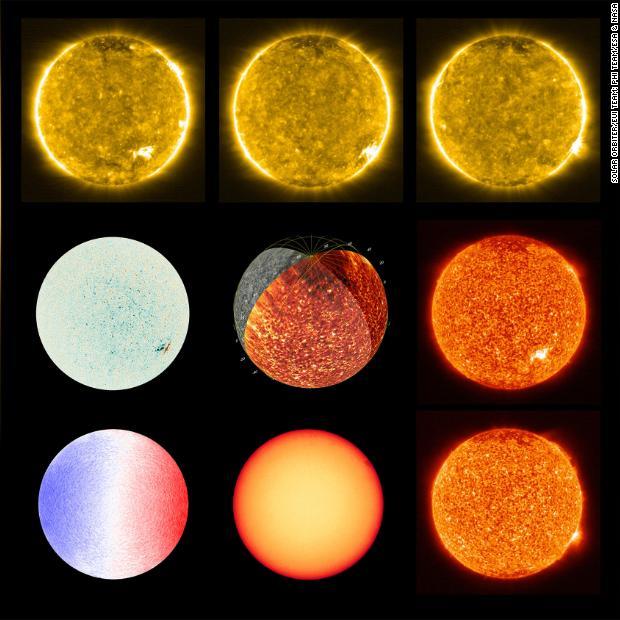
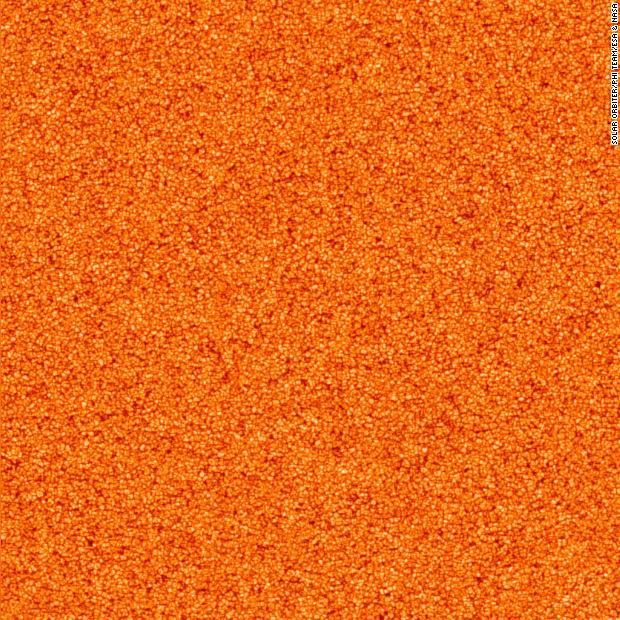
“I tried to color the bone powder to make it black, but it didn’t work too well,” recalled John O’Donoghue, the founder of ENBIO.Instead, he started looking for a naturally black bone powder. “I remembered reading as a kid that in cave art, people used charcoal and, in some cases, [burnt] animal bones, because the end of it would be like a crayon and they could draw on walls,” he said.
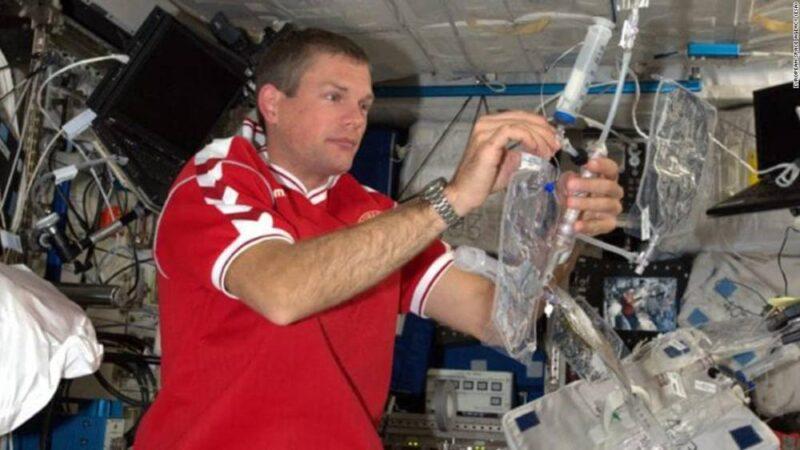
A filter made for astronaut urine could soon be providing drinking water on EarthAfter O’Donoghue sourced some burnt animal bone powder, ESA found it was ideal for the solar mission. In addition to being black, there’s nothing combustible left in the material — so when it’s heated up it, doesn’t release any gases that could damage the spacecraft, explained Garcia Marirrodriga.The resulting coating, called SolarBlack, covers about a fifth of Solar Orbiter’s surface area, and keeps its most delicate parts operating at room temperature while absorbing heat up to 1,000 degrees Fahrenheit. ENBIO, in collaboration with Airbus (EADSF), also developed SolarWhite, a white coating that covers other parts of the satellite where sunlight needs to be reflected rather than absorbed.
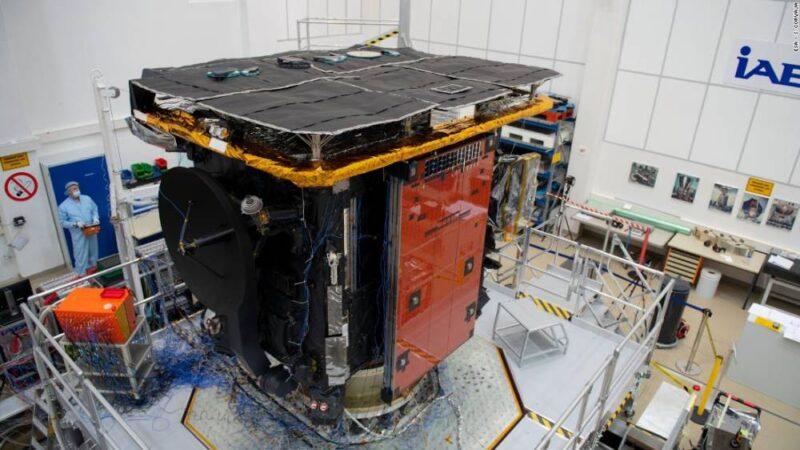
The Solar Orbiter spacecraft during preparations for a vibration test in February 2019.
Aiming for space
O’Donoghue’s interest in coating technology began while studying biomedical engineering at Trinity College in Dublin. He founded ENBIO in 2006 and in 2015, the company opened a €1.5 million ($1.8 million) industrial coating facility in Clonmel, about 100 miles southwest of Dublin. Solar Orbiter has earned the company several million euros, according to O’Donoghue, and ESA has deployed SolarBlack on other missions.
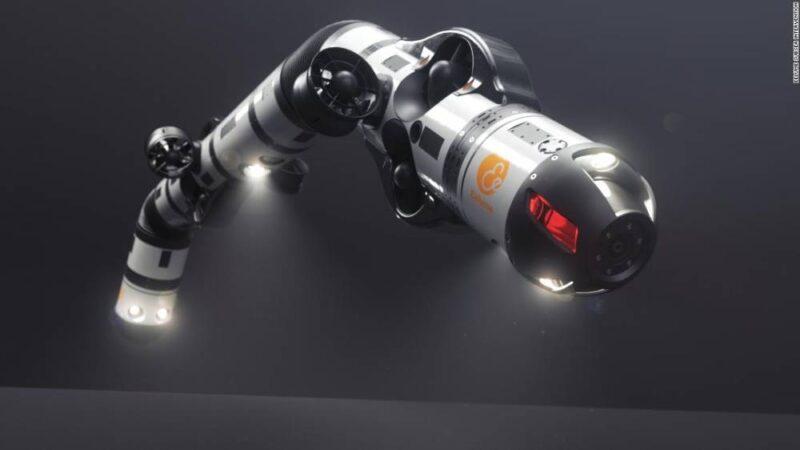
This 'snake robot' can fix pipelines on the ocean floor O’Donoghue said the coatings and the coating process can find applications in the automotive, metal, heating and energy industries, among others, but the current focus lies beyond this planet. “We aim for the space sector because we felt if we go to the top of the pyramid and [do well there], the rest of the industry will be more accepting of it,” he said.
Although its main mission won’t start until November, last July Solar Orbiter sent back the closest images of the sun ever taken.Over the next few years, the €1.5 billion ($1.8 billion) mission will use the gravity of Earth and Venus to slingshot itself ever nearer to the sun, eventually achieving a closest pass to the star within the orbit of Mercury. “The goal is to really understand the physics of how the sun creates and controls the heliosphere (the area around the sun), and why the solar activity changes over time,” said Garcia Marirrodriga.
Source: edition.cnn.com

